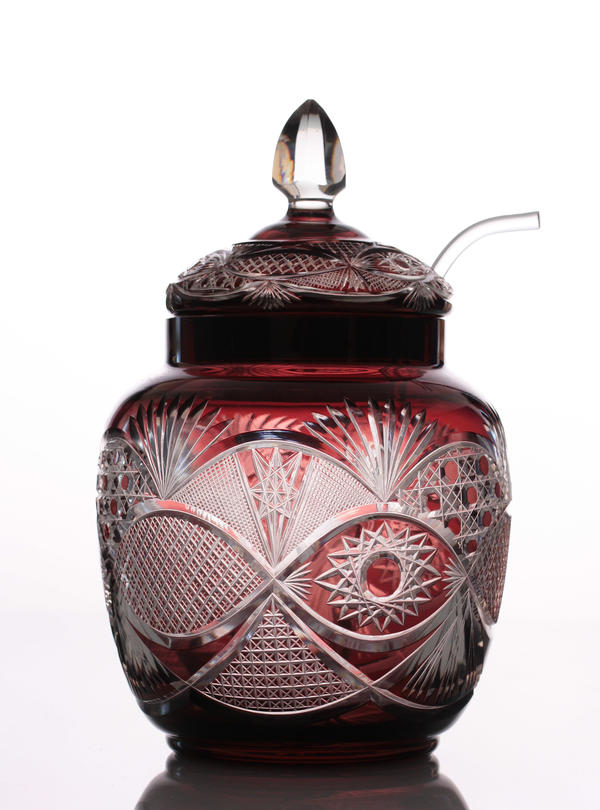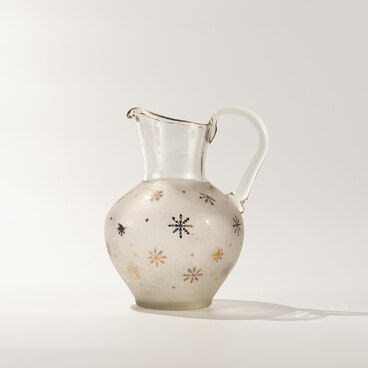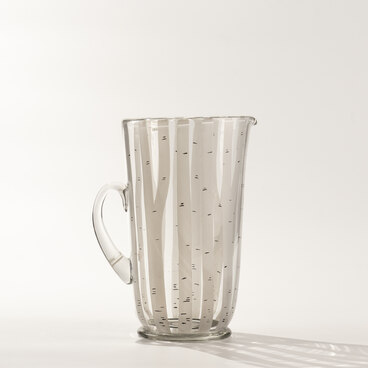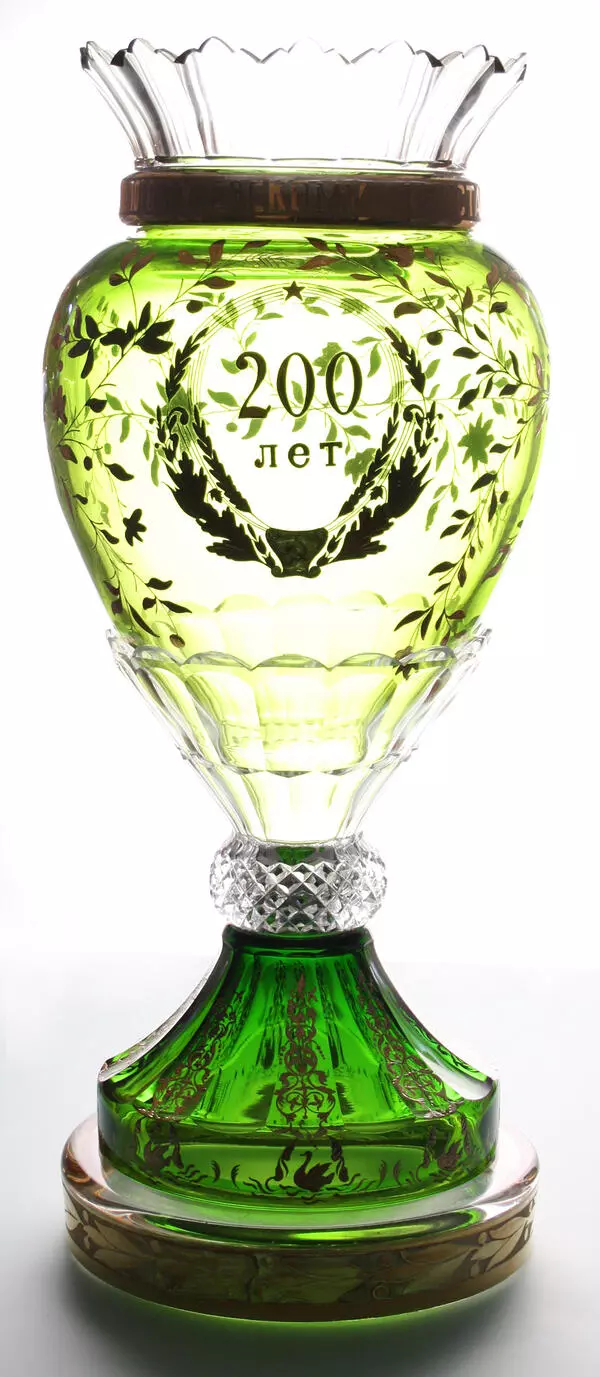This cruchon bowl is made of crystal with a colored overlay of manganese glass and decorated using the complex technique of deep cutting. It belongs to a cruchon set that also includes a tray, a special ladle for pouring the drink, and six glasses.
Cruchon (from the French word meaning a “pitcher”) is an alcoholic dessert drink that is served cold. It is made from grape wine mixed with cognac, liquor, champagne, fresh or canned fruit or berries. Some recipes also include cider, mineral water, and other soda drinks. As a rule, the drink is named after the fruit it contains: there are such types of cruchon as strawberry, apple, cherry, and lemon. Cruchon is supposed to be cooled to 8–10° C and served in glass or crystal cruchon bowls or pitchers. The cocktail and the ice are served separately. Cruchon is considered to be a medium-strong beverage with an alcohol content of over 9%. There are also lighter and alcohol-free recipes.
Crystal is highly transparent glass that contains lead oxide. The use of lead gives the product its distinctive gloss finish and ringing sound. The two types of glass of different colors are combined during the glass working process when the craftsman takes glass mass from two melting pots. Overlay glass is the most complicated glass working technique performed at the melting furnace. The beautiful purple and violet colors of the glass are achieved with the help of manganese compounds. To embellish the vase, the craftsman used such alternating patterns as “canoes”, “shrubs”, “mesh”, “fine mesh”, and “elaborate stars with stones”. The vase is made in the style typical of the 1950s. The products of this period are characterized by a festive, lavish, and elaborate design.
This cruchon set was made by Yevgraf Shuvalov, the People’s Artist of the Russian Soviet Federative Socialist Republic. He worked at the Dyatkovo Crystal Factory for over forty years, having risen to the rank of chief artist. He developed over 500 types of glass and crystal products, with over 100 million items produced based on his patterns. There is an entire large hall on the second floor of the Crystal Museum dedicated to the work of Yevgraf Shuvalov.
Cruchon (from the French word meaning a “pitcher”) is an alcoholic dessert drink that is served cold. It is made from grape wine mixed with cognac, liquor, champagne, fresh or canned fruit or berries. Some recipes also include cider, mineral water, and other soda drinks. As a rule, the drink is named after the fruit it contains: there are such types of cruchon as strawberry, apple, cherry, and lemon. Cruchon is supposed to be cooled to 8–10° C and served in glass or crystal cruchon bowls or pitchers. The cocktail and the ice are served separately. Cruchon is considered to be a medium-strong beverage with an alcohol content of over 9%. There are also lighter and alcohol-free recipes.
Crystal is highly transparent glass that contains lead oxide. The use of lead gives the product its distinctive gloss finish and ringing sound. The two types of glass of different colors are combined during the glass working process when the craftsman takes glass mass from two melting pots. Overlay glass is the most complicated glass working technique performed at the melting furnace. The beautiful purple and violet colors of the glass are achieved with the help of manganese compounds. To embellish the vase, the craftsman used such alternating patterns as “canoes”, “shrubs”, “mesh”, “fine mesh”, and “elaborate stars with stones”. The vase is made in the style typical of the 1950s. The products of this period are characterized by a festive, lavish, and elaborate design.
This cruchon set was made by Yevgraf Shuvalov, the People’s Artist of the Russian Soviet Federative Socialist Republic. He worked at the Dyatkovo Crystal Factory for over forty years, having risen to the rank of chief artist. He developed over 500 types of glass and crystal products, with over 100 million items produced based on his patterns. There is an entire large hall on the second floor of the Crystal Museum dedicated to the work of Yevgraf Shuvalov.








